When I was asked to write a blog post on how to switch to Spelling You See, my first thought was “as fast as possible, and don’t look back!” Laughingly, I realize that my impulse to make that statement might lead you astray. Let me give you a more thorough answer about HOW, in the context of WHY.
I am a veteran homeschool mom, with four children who graduated high school under my supervision. Those children all have degrees of one sort or another and have done well for themselves. Two of them are stellar spellers, and two are still hesitant to spell without assistance from a good proofreader. (Note I said proofreader, because spell check is not all it is cracked up to be. It does not check for context, for homonyms, or for syntax errors. It only looks for proper letter patterns, so spell check will not catch your mistake of writing to when you meant two.) I have asked myself for years how I managed to instruct four children the same way and have two entirely different outcomes.
With the advent of Spelling You See, I finally learned that the differences between my children were borne of the fact that half of them had cultivated a visual memory for commonly spelled words and half of them did not. I did not realize that I had a visual memory for spelling until I understood the research that underlies Spelling You See.
How to Switch to Spelling You See
How do you transition from another program to Spelling You See? First and foremost—read the handbook. I cannot stress this enough, especially if you are a veteran homeschool parent. You will think you know how to implement the Spelling You See process, but I assure you that you will NOT get the best advantage out of the program unless you do it as it has been designed.
And a further word on that design—do not add to the program or shortcut the program. Don’t add a “challenge word test” in the middle of the week. That introduces stress and negates the process of building visual memory. Don’t assume you don’t have to read the passages out loud to your child—daily—because those readings, exactly as they are written, are vital components in success. In short, don’t start the program unless you are willing to set aside your preconceptions about how to teach spelling and embrace a new way of spelling instruction.
I would encourage you to promote the fact that you will no longer have spelling tests and that you will no longer be putting the emphasis on the misspellings. What you are going to be doing instead is setting out on a program that has instruction in a positive context—you are going to find what your child is doing right and encourage them to do more of it.
Once you have carefully read the handbook associated with the level you have selected, then I encourage you to make a celebration of the fact that you will no longer be “testing on spelling.” Believe me, that attitude change alone will encourage your child tremendously. Know that once you truly understand how the Spelling You See program is organized and implemented, there will be no further preparation on your part except to implement the steps of the program daily with your student. That attitude change on YOUR part will be a bonus. I promise it will be a win-win for you both!
We Are Here to Help
Placement in Spelling You See is really important, and it is nuanced. It’s designed this way because we want a child’s spelling experience to be easier than their reading experience. In order for us to do that successfully, we have a set of guidelines.
If you have any questions, we encourage you to get in touch with us so that we can help you. We want you, and your student, to be successful in your spelling journey.
Get in Touch



Hi, Gretchen. I have been using Spelling Power for all of our homeschooling so far. I now have a college kid, a high schooler, and a middle schooler. I’m curious about the Spelling You See program, and if it is similar in structure to Spelling Power, which also doesn’t “test” at the end of the week or lesson.
Hi LauraLee: I am curious as to how your students are spelling at present? The reason I ask is because I always subscribe to the belief that what isn’t broken doesn’t need to be fixed. That having been said, the approach between the two programs you have queried about is very different. The research on which Spelling You See is based says that we each have to walk through a progression toward spelling proficiency, and if we fall out of that progression along the way, we are then “hesitant spellers”. In the Spelling You See world, and in spelling in general, context is the carrier and is KEY to your understanding. Which is why we always work with passages to teach spelling. As an example, if I ask you to spell the word “do”, you need to know the context – am I referring to “dew on the grass”, the “due date for an assignment” or “do” as a transitive verb? This is why Spell Check is not the be-all, end-all — it doesn’t correct for context. To be an adept speller in English, you have to recognize pattern, and that is the overarching goal of Spelling You See. What I often see is students who do well with a list of words, but don’t retain that list long term. It is because our brain treats a list as item memory, and unless you are naturally an adept visual learner, it does not go into long term memory. The bottom line is that in order to be an adept speller, you must become a visual speller. Although Spelling Power and Spelling You See have in common the fact that there are no tests, beyond that the approach and the philosophy are very different.
I have been using All About Spelling. I have gotten up to the level 3 book. It’s quite time consuming and I find my kids don’t always enjoy it. But the All About Reading and Spelling have worked brilliantly in teaching them how to read and spell.
My middle son (or 3 children) seems to have some form of dyslexia. After attempting multiple times to teach him the alphabet and phonics and reading, the teaching method seemed to be very heavily based on sight recognition, All About Reading finally gave us the breakthrough.
I am very keen to try Spelling U see, especially because all 3 my kids are enjoying Math U See, but will a possibly dyslexic child manage on it, when we have previously not had great success with learning to read using Sight words and Flashcards.
Bianca, the challenge with those lists of words and cards is there is no context for them to adhere to ~ think of it this way: If you use a list for grocery shopping, do you get everything on the list if you leave it at home? Probably not, because your brain treats that list as item, e.g. temporary, memory. Further, I would bet you wouldn’t remember a list from a week or two ago. That is why the process of Spelling You See, learning words within passages, is a superior method. I have worked with many, many children, including my own dyslexic son, for whom Spelling You See was a true game-changer. I also think that in terms of your time commitment, you will find Spelling You See a refreshing change. If you have further questions and would like to speak about the concerns of dyslexia in a little more depth, please feel free to call me, 717.524.5692, or email.